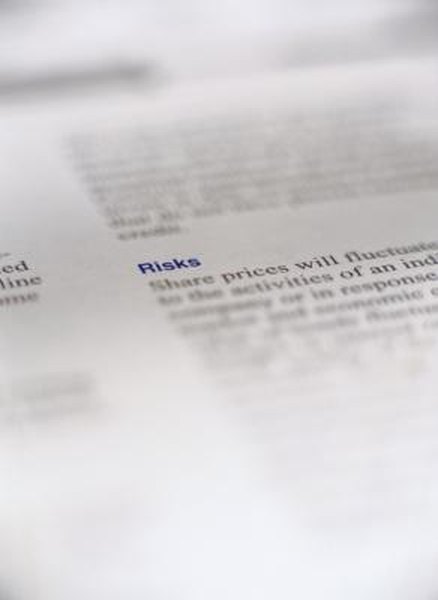Requirements for Mutual Fund Financial Statements
A mutual fund must issue annual and semiannual reports to its shareholders that give details about the fund's performance and finances.
Photodisc/Photodisc/Getty Images
A mutual fund lets investors pool money together for a fund manager to make informed investment decisions based on the fund's criteria. Investors buy shares of these funds, whose value changes with the performance of the investments in the fund’s portfolio. Because mutual funds are regulated by the Securities and Exchange Commission, the funds are required to release an annual and semiannual report that includes detailed information about the fund’s performance, finances and holdings.
Annual Report
A mutual fund’s annual report must provide detailed information about its performance during the previous year, including comparisons with the fund’s historic trends. Investors can read a narrative from the fund’s managers about its recent and historical performance. The report must feature a line graph that compares the 10-year performance of a hypothetical $10,000 investment in the mutual fund against that of a relevant market index, such as the S&P 500, for example. Investors will also be able to find a performance table that shows the average percentage of returns over one-, five- and 10-year periods.
Semiannual Report
The semiannual report is not required to have the detailed performance review available in the annual report, though it does give some financial highlights. Both the annual and semiannual reports are required to give information about the fund's expenses and holdings. According to the SEC, these reports must show how much in expenses were charged against a hypothetical $1,000 investment in the fund during the prior six-month period. Both reports must give investors information about what stocks and other investments the fund holds. While it doesn't have to disclose all holdings, the top 50 investments must be listed in the annual report. Additionally, both reports must show how the fund's holdings are divided, which includes the percentage invested in each industry sector, as well as the geographical distribution of the fund’s investments.
Other Financial Disclosures
Both reports also provide additional financial information about the mutual fund that can be useful to investors. A financial information table will show the fund’s total returns during the past five years. The fund’s portfolio turnover rate, which shows how often it bought and sold investments, can help investors monitor the fund’s expenses, according to the SEC. The reports also must disclose how dividends are generated, as some dividends are a return on capital and not actually the result of a profit. Mutual funds with other outstanding issues that could affect performance, such as a lawsuit, must disclose these as part of the report’s notes section.
Other Public Information
Mutual funds must also make available other informational documents to help guide investors. These include a prospectus, which contains information about the fund’s fees and expenses, as well as information about the risks, strategies, performance history and prices of the fund. Also, a mutual fund must file detailed information with the SEC about its investment portfolio and the deliberations of fund managers. While funds don’t have to provide this information to their investors, it is available from the SEC for investors who want to perform additional research.
References
Writer Bio
Terry Lane has been a journalist and writer since 1997. He has both covered, and worked for, members of Congress and has helped legislators and executives publish op-eds in the “Wall Street Journal,” “National Journal” and “Politico." He earned a Bachelor of Science in journalism from the University of Florida.

